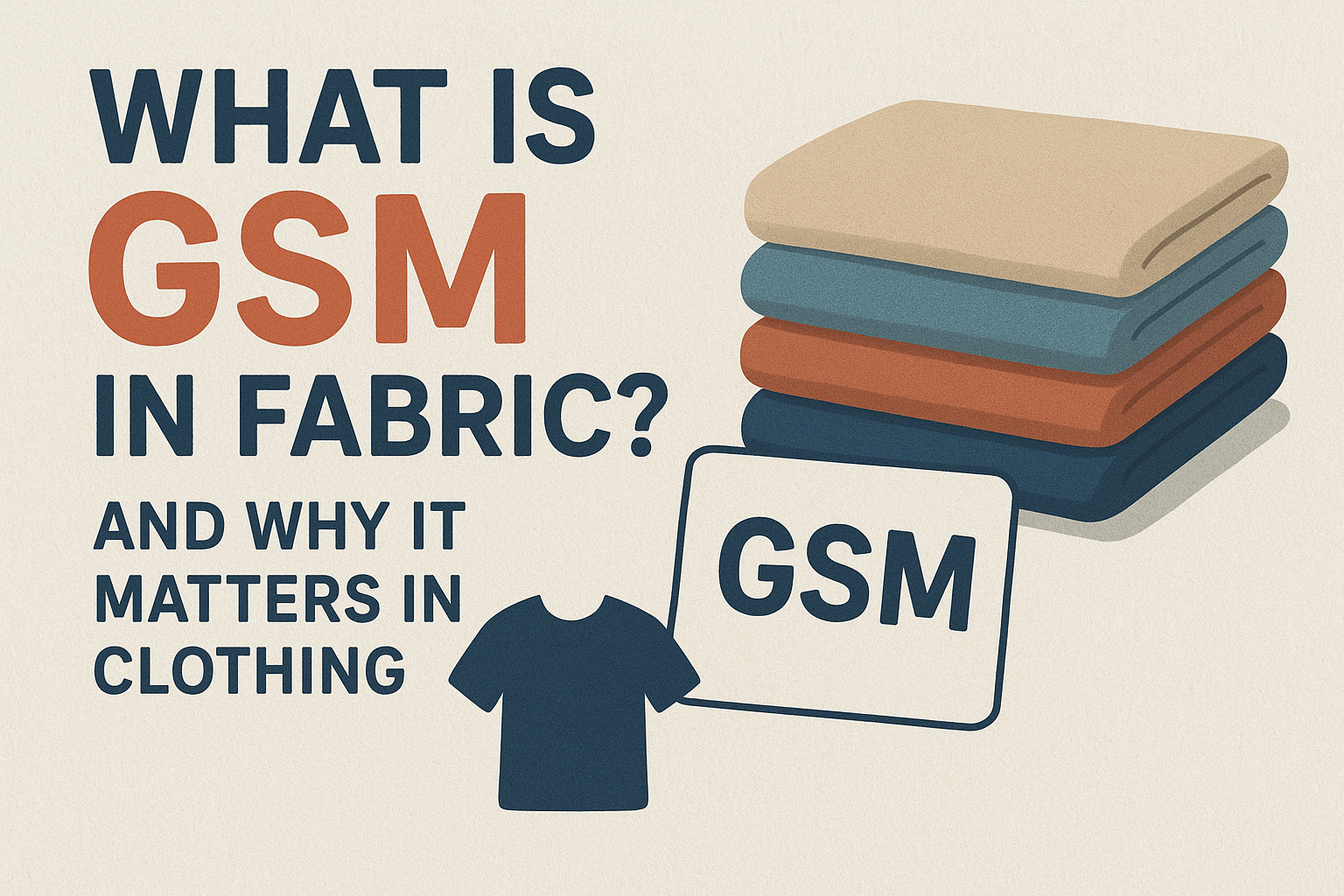When buying clothes or fabric, you’ve probably noticed terms like “180 GSM cotton” or “300 GSM fleece.” But what does GSM in fabric actually mean? And more importantly, why should you care about it when shopping for or working with clothing?
In this post, we’ll break down:
- What GSM means
- How it affects clothing feel and performance
- How to choose the right GSM for different garments
Do you want to start a fabric business in India? If yes, then here is the complete guide where you will understand what exactly GSM is.
What Does GSM in Fabric Stand For?
GSM stands for Grams per Square Meter.
It’s a unit of measurement that tells you how heavy or dense a fabric is. Essentially, it measures the weight of the fabric per one square meter.
This is a crucial metric in the textile and fashion industries because it directly relates to how:
- Thick
- Durable
- Warm
- Opaque
a fabric will be.
Why GSM Matters in Clothing?
1. Thickness & Warmth
- Higher GSM = Heavier & Thicker fabric.
- Example: 350 GSM fleece is thick, warm, and perfect for winter.
- Lower GSM = Lightweight & Breathable.
- Example: 120 GSM cotton is light, airy, and good for summer wear.
2. Durability & Strength
- Higher GSM fabrics often last longer because they’re denser.
- This is especially important in items like jeans, workwear, or upholstery.
3. Comfort & Wearability
- Lightweight GSMs feel softer and more breathable on the skin.
- Heavyweight GSMs can feel stiff if not blended or broken in.
4. Drape & Flow
- Low GSM fabrics drape better and are used in dresses, skirts, and scarves.
- High GSM fabrics have more structure, good for jackets, suits, and pants.
Why choosing the Right Fabric Matters for Small Clothing Business owners?
Common GSM Ranges by Fabric Type
| Fabric Type | GSM Range | Use Case |
|---|---|---|
| Cotton T-Shirt | 120–180 GSM | Everyday wear, summer tees |
| Fleece | 250–400 GSM | Hoodies, jackets, cold weather clothing |
| Denim | 300–500 GSM | Jeans, jackets, workwear |
| Linen | 100–200 GSM | Summer dresses, shirts |
| Silk | 50–100 GSM | Scarves, lingerie, flowy garments |
| Suiting Wool | 200–350 GSM | Blazers, trousers, suits |
How to Choose the Right GSM for Your Needs
👕 For Everyday Clothing:
Stick with 130–180 GSM for breathable yet sturdy fabric. Great for t-shirts, tops, and light dresses.
❄️ For Winter Wear:
Look for 250 GSM and above. These fabrics offer insulation and structure, perfect for hoodies, coats, and thermal gear.
🧵 For Sewing or DIY Projects:
- Choose fabric based on the garment type.
- Lighter GSM = better for drapey styles.
- Heavier GSM = better for structured designs.
GSM vs Thread Count: What’s the Difference?
- GSM measures the weight of fabric per square meter.
- Thread Count (used mostly in bed linens) measures the number of threads in one square inch of fabric.
GSM is a better indicator of fabric weight and usage in clothing, while thread count is more about smoothness and weave density.
Conclusion
Understanding GSM in fabric helps you make smarter choices—whether you’re shopping for clothes, sourcing textiles, or starting a DIY fashion project. It impacts comfort, durability, warmth, and fit—all things that matter when it comes to good clothing.
Next time you’re reading a fabric label or buying online, don’t just focus on color and texture—check the GSM. It might be the difference between loving a garment or leaving it in the back of your closet.
